Associated as it is with manipulation, emotional or illusionary trickery, and subjective sentiment, aesthetics seems antithetical to the legal conception of truth as objectively given. But aesthetic considerations traverse all dimensions of forensic operation. Forensics is an aesthetic practice because it involves the modes and the means by which incidents are sensed and evidence is presented.
Aesthetics is employed in different ways across the three domains of forensic operations – the FIELD, the LABORATORY and the FORUM. In the FIELD, it is exemplified in the way in which matter holds the traces of incidents. In its original Greek meaning, aesthetics is that which pertains to the human senses. But matter also has a sensorial capacity. MATERIAL AESTHETICS is the modes and means by which things react to impact or contact. Such an aesthetics of sentient materiality applies equally to bones – as a medium in which nutrition, habits, labour, and abrupt traumas become texture and form – as to buildings and rubble, that can be read as media in which traces of incidents – a firefight or a bomb, or slow processes of decay – are registered. Bones and buildings could be seen as SENSORS, ‘aestheticized’ to their surroundings, their material transformation imaging the changing environment around them.
In the LABORATORY (or for Forensic Architecture, the STUDIO) – aesthetic practices such as film, photography, and modelling are employed to collate image and data, validate facts, assemble cases and compose narratives. Here aesthetic functions are entangled with probative ones, and also facilitate them.
In the FORUM, aesthetics is manifested in the way a case is publically presented. The presentation of an investigation’s findings can involve different techniques and technologies of demonstration, rhetoric, and persuasion: forms of image display, projection and enhancement are used widely in courts and inquiries; and elements of performance are often involved, through gesture, narrativisation and dramatization.
Forensic practitioners are keenly aware of the paradox inherent in the aesthetic dimension of their discipline: they know how essential aesthetics is to the investigative, interpretative and presentational labour necessary to ascertain and assert the most simple of facts; but likewise, how important it is to refer to the truth as something much more obvious and given.
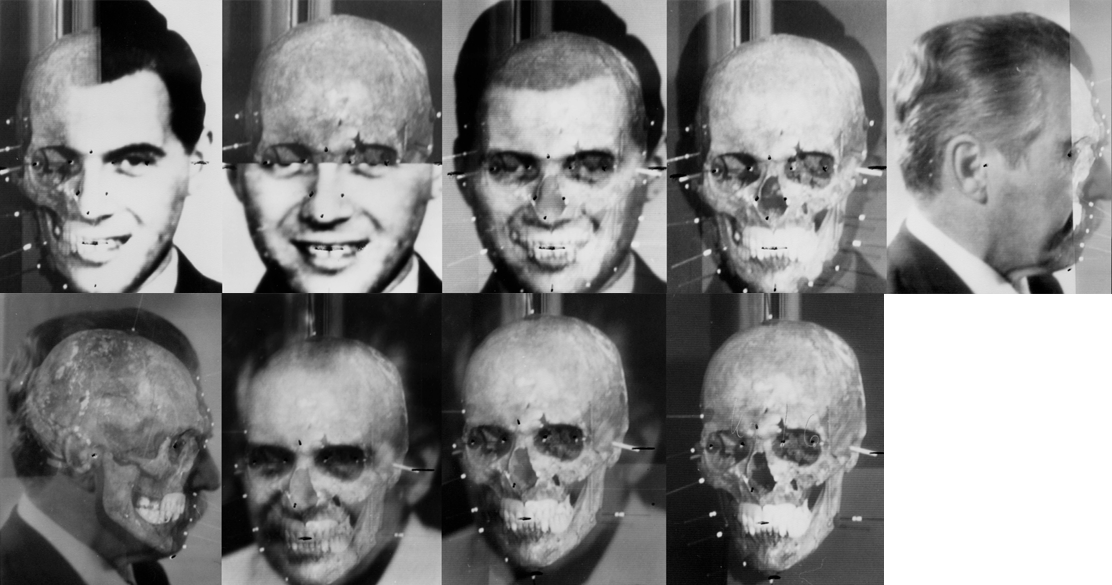
Images produced by Richard Helmer superimposing a portrait of Josef Mengele with images of his skull, Medico Legal Institute Labs, São Paulo, Brazil, June 1985. Image courtesy of Maja Helmer. The concept of Forensic Aesthetics draws on research conducted with Thomas Keenan.
In 1984, human remains claimed to be that of Josef Mengele, the ‘executioner of Auschwitz’, were discovered in the suburbs of São Paulo. The best forensic experts worldwide, appointed to examine and identify them, went through a systematic reconstruction of the events of Mengele’s life as physically recorded in the form and texture of his bones. Richard Helmer, a German pathologist and photographer, developed the videographic technique of ‘face-skull superimposition’, in which a video image of a portrait photograph is placed over a video image of a skull in order to determine whether the two represent the same individual. As such, an image produced as part of the scientific process became effective beyond the protocols of both science and the law, in the visual realm of presentation and persuasion.
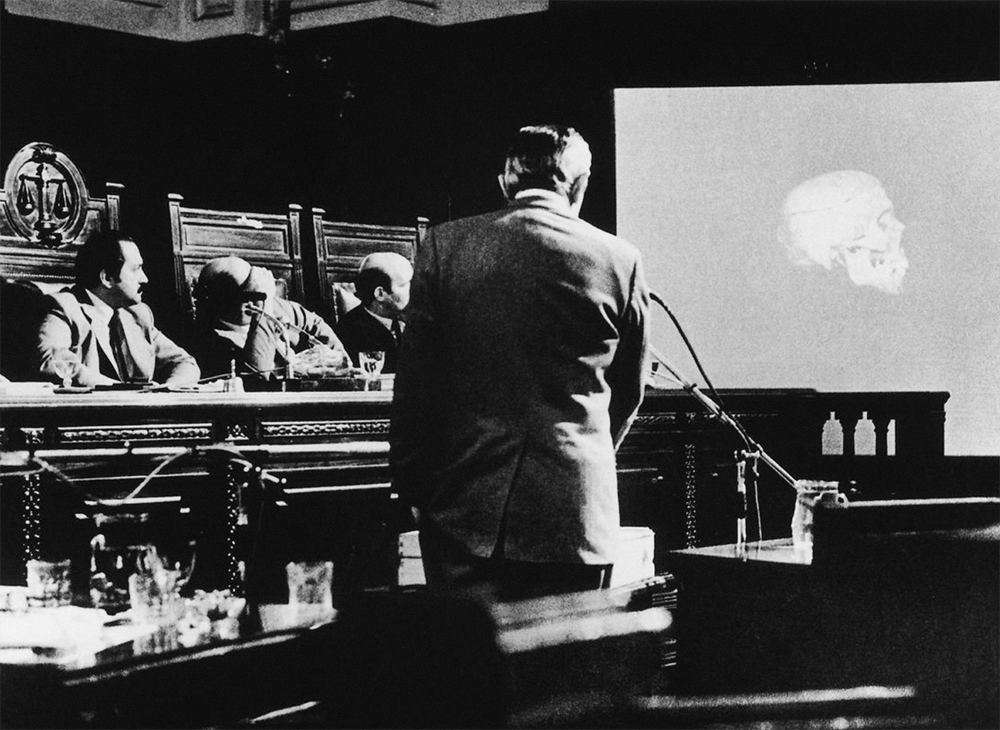
Clyde Snow presents a slide of the skull of Liliana Pereyra, in the 1985 trial of members of the Argentine junta for crimes committed in the ‘dirty war’ (1976–1983).
Clyde Snow was one of the pioneers of the application of forensic anthropology to investigate state crimes. He participated in the exhumation of the remains of Josef Mengele in 1985. Snow later trained the team that conducted the exhumations of the ‘disappeared’ in Argentina – the Argentine Forensic Anthropology Team (EAAF) – the first forensic anthropology team working in the context of human rights. Snow referred to his work as ‘osteo-biography’, saying that the skeleton contains ‘a brief but very useful and informative biography of an individual … if you know how to read it’. Blurring the boundary between object and subject, he sometimes spoke of and to bones in a Hamletlike manner, posing questions to them but most often simply speaking on their behalf, or ‘telling their stories’.
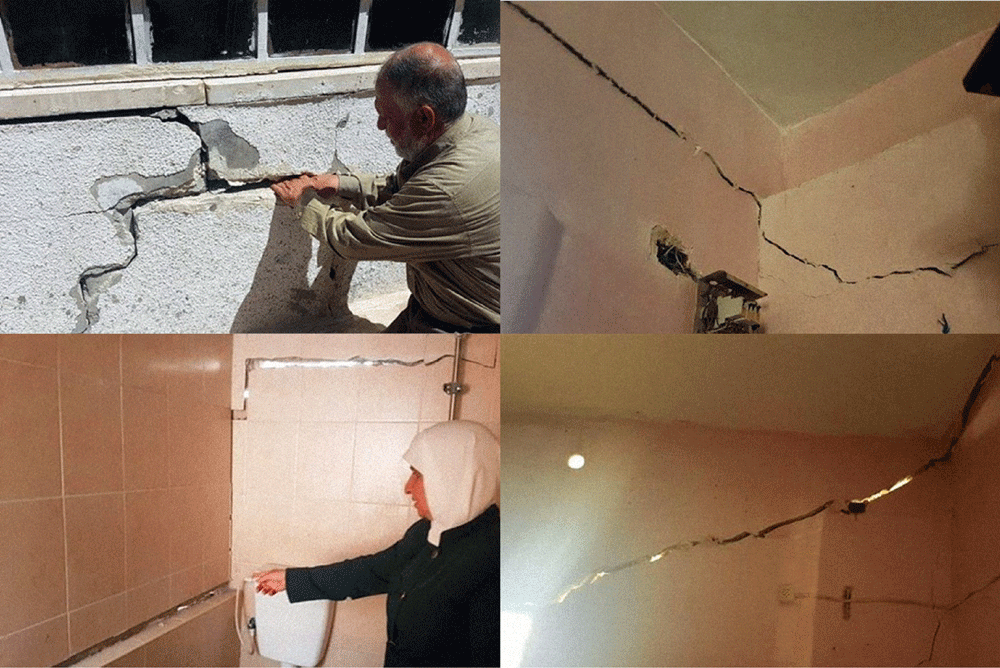
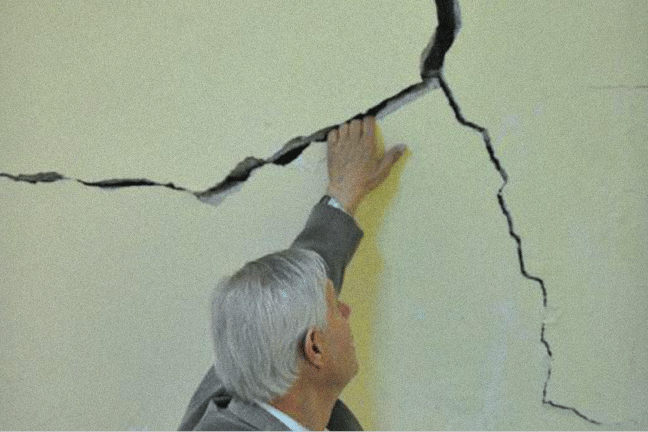
Top images courtesy Ma’an News Agency. Bottom image courtesy Gagi Dagon.
Cracks in buildings can be read as SENSORS. They are material events that emerge as the result of force contradictions, progressing slowly or at speed along paths of least resistance. In 2008, cracks started to appear in homes, public buildings, and streets in Silwan, a Palestinian neighbourhood located next to the Old City of Jerusalem. Shortly beforehand, a Jewish settler association started an illegal excavation through parts of an Iron Age site it believed to be the biblical ‘City of David’. Documentation of the cracks was presented in court as evidence of the illegal excavation, but the court rejected the residents’ petition to stop it.
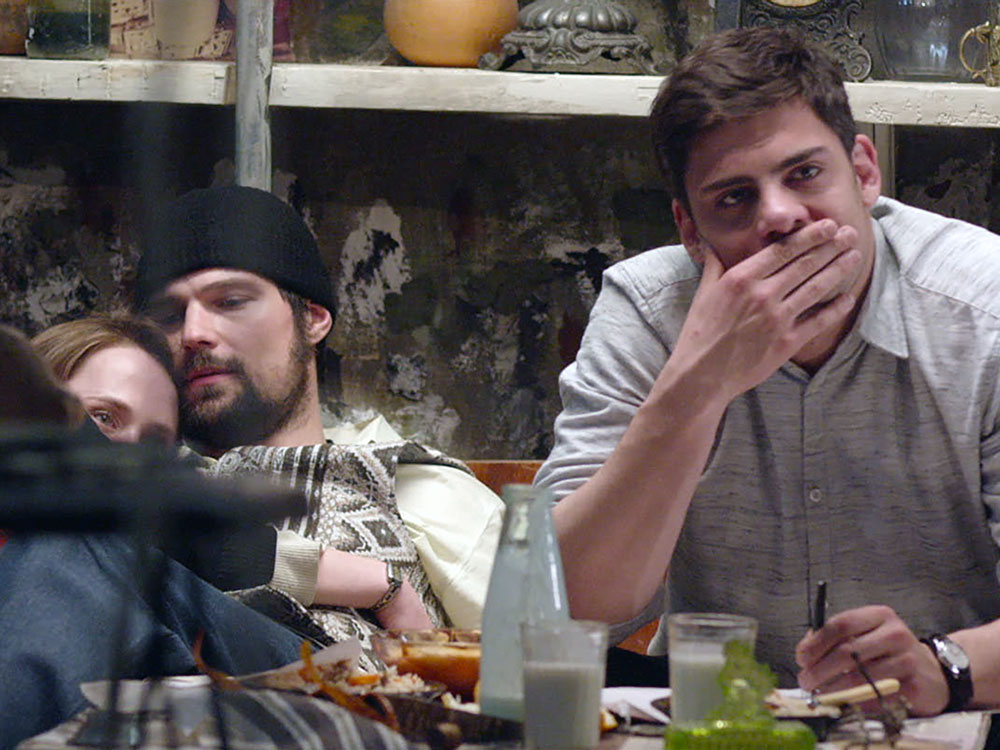








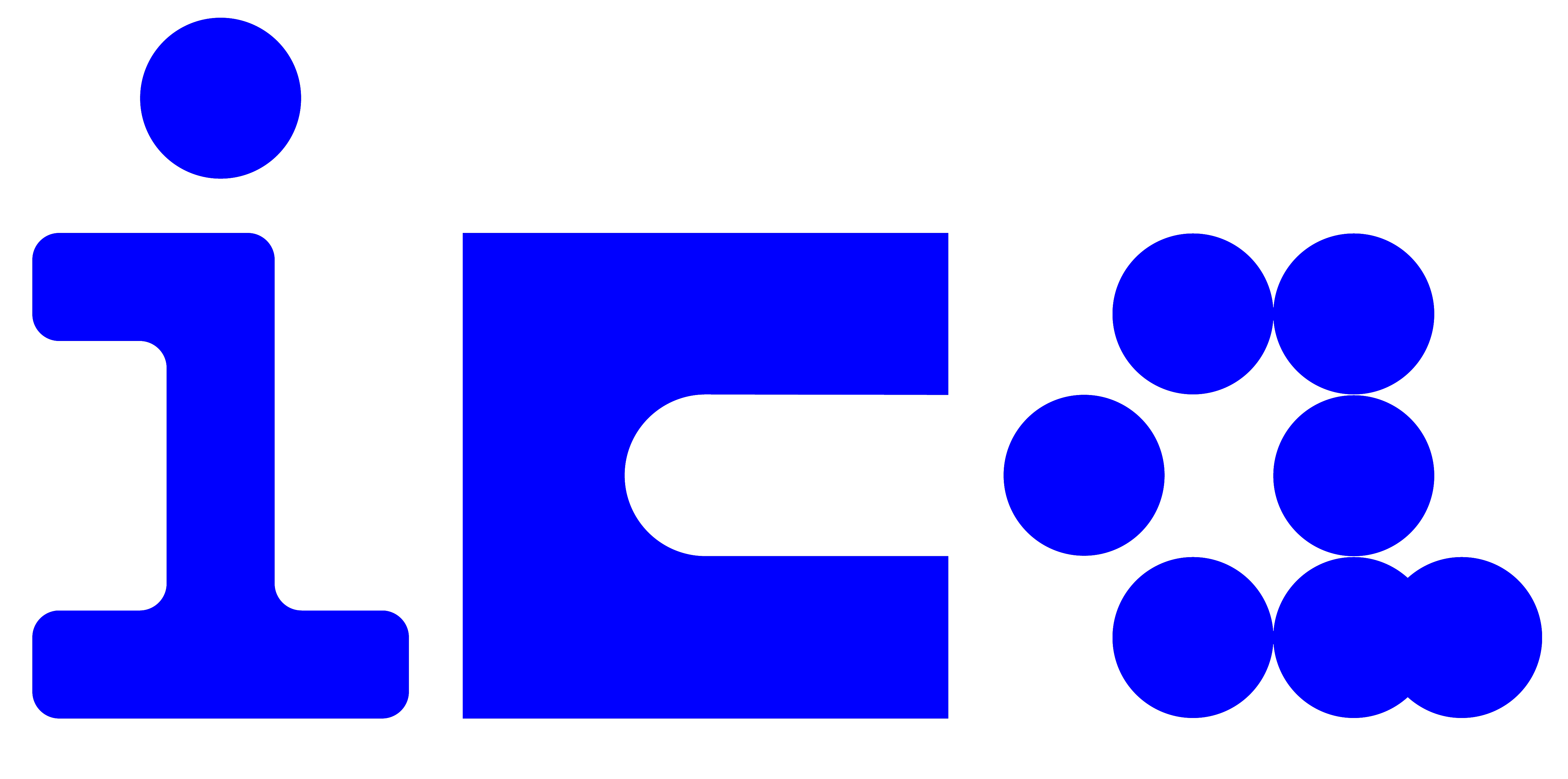
no. 236848.